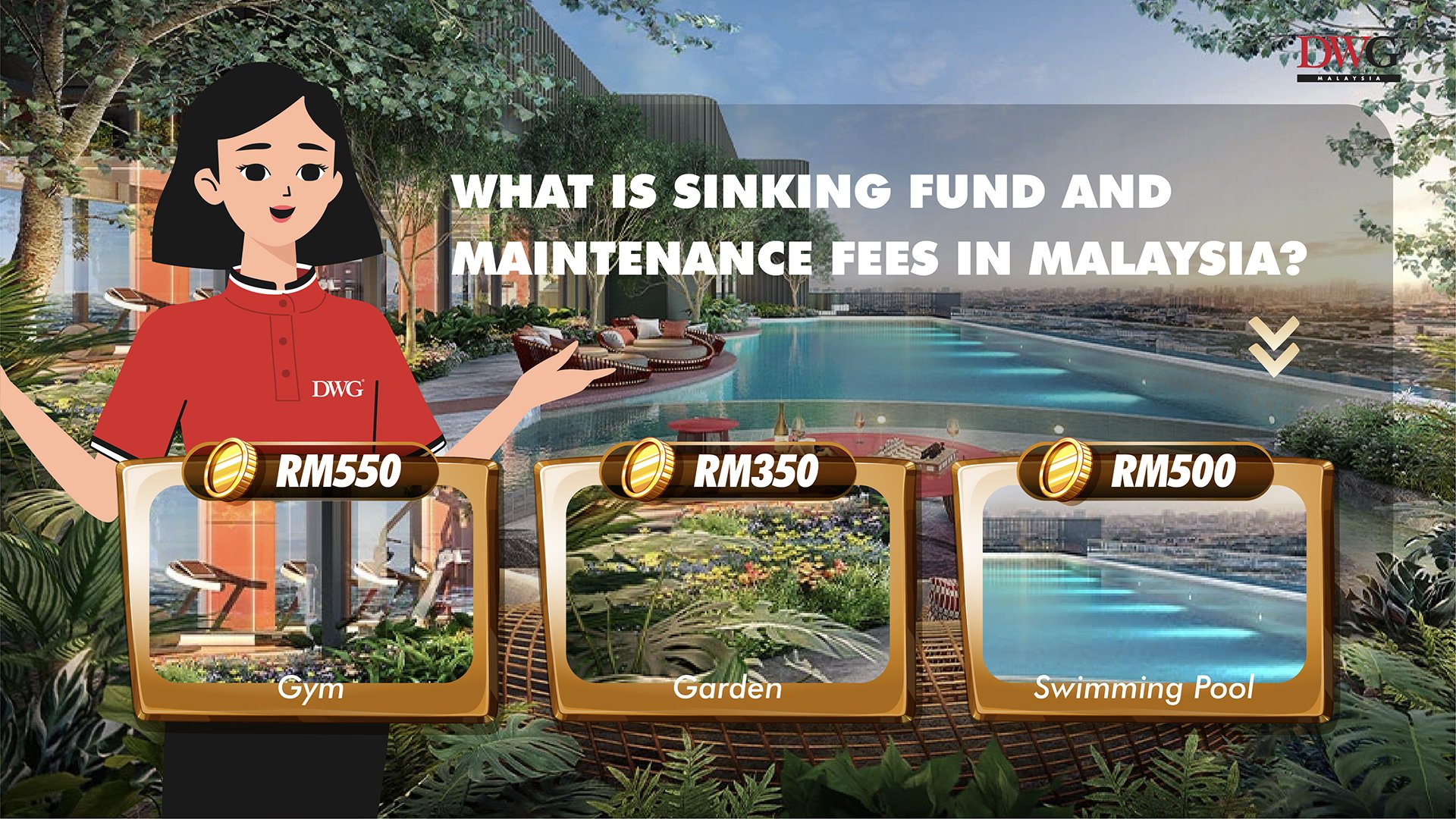What is Sinking Fund And Maintenance Fees In Malaysia?
Buying a property involves costs beyond the purchase price, it is important to be aware of the additional costs that come with it. Sinking funds and maintenance fees are two important aspects of property ownership (especially strata title property) that often get overlooked. You need to pay for your monthly installment, yet you still need to pay these extra fees, what's up with that?
Yes, yes, we know. Homeownership can be tough.
So, how do these additional costs affect you, and why would you want to pay them? We'll take a closer look at what these fees are and how they work.
What is a maintenance fee?
As a property owner, you have to pay for the general upkeep of your building. This includes things like painting, repairs, and other maintenance work. To do this, most strata-titled properties in Malaysia collect a monthly or yearly maintenance fee from all owners. The maintenance fee is used to pay for the day-to-day upkeep of the development, such as cleaning, security, and landscaping.
How to calculate maintenance fees in Malaysia?
Every development calculates maintenance fees differently, but listed below are some common factors that determine how the fees are paid.
Size of property
The amount of maintenance fee you pay is dependent on the size of your unit.
Example:
RM0.20 per sqft for a 500 sqft property
RM0.20 x 500 = RM100/month
Number of facilities available
The more facilities the building is required to upkeep, the more the maintenance expenses stack up. For instance, a property with 50 facilities will need adequate funds to maintain 50 facilities compared to a property with just 10 facilities that just need enough funds to maintain the 10 facilities.
Number of units within the development:
More owners within the same development will indirectly mean a lower maintenance cost as more owners share the maintenance cost. An example would be eating in a restaurant and footing an RM100 bill after the meal. With only 2 people, the price will be RM50/pax. Meanwhile, with 5 people, the cost will be RM20/pax. Hence, owners within exclusive low-density development often pay higher maintenance fees than owners within high-density development.
Here’s the general idea of it:
Operating expenditure ÷ Total share units in condo development =
Maintenance fee to be paid
How to justify the amount of maintenance fee paid?
So you have an idea of how the maintenance fee is being calculated. Now you want to understand better why you are paying for that amount, and here's some reasoning behind it.
Type of services:
The standard services include security, cleaning, and lift servicing. However, even different service standards will affect maintenance fees, like comparing the price for 2-tier and 5-tier security or how some developments even have concierge and housekeeping services like a 5-star hotel.
Type of facilities:
Is it just a basic swimming pool, or is it an Olympic-sized swimming pool? Is it just a few plain treadmills available in the gym, or is it fully equipped like commercial gyms? Luxury comes at a price, the more exclusive the facilities, the more the upkeep cost.
Service Quality:
Do professionals manage the development? Are the cleaners and security guards professionally trained to carry out their tasks? Are the common areas being cleaned daily or once a week? The higher the expected service quality, the higher the maintenance cost will be necessary to maintain the accepted level of service quality.
What is a sinking fund?
Sinking funds are like saving accounts for rainy days. They are reserved funds for necessary extensive urgent repairs or upgrades within the development.
Here are some examples of how sinking funds are utilised:
The painting of any interior or exterior of the common property
The purchase of any assets for the use of common property (e.g. new gym equipment)
The repair, servicing, or replacement of any fixture or fitting for the common property (e.g. replace rotten sofa by the lobby)
The upgrading and refurbishment of the shared facilities (e.g. converting the under-utilised event room into a co-working space)
Unexpected large repair works as the JMB deems necessary
How to calculate sinking funds?
They are kept in a separate account from the maintenance fee, and they're usually calculated as 10% of the maintenance fee. This means that the higher the overall maintenance fee, the bigger these reserves will be. In more expensive developments with higher maintenance costs, larger amounts of sinking funds will be set aside for future repairs and replacements.
Common calculation for sinking fun:
Monthly Maintenance Fee x 10% =
Sinking fund to be paid
Sample Calculation:
10% of Sinking Fund out of RM100 monthly Maintenance Fee
RM100 x 10% = RM10/month
However, The JMB or MC may opt to raise the sinking fund rate beyond 10% of the maintenance fee, provided all relevant parties vote in favor during the general meeting.
Can you choose not to pay your maintenance fee and sinking funds?
Well, to put it simply, no. You should pay your maintenance fee and sinking funds. As long as you're living within a strata title property, it is a requirement bound by law to do so.
In accordance with the Strata Management Act 2013 (SMA), developers must establish a management entity, such as a Joint Management Body (JMB) or a Management Corporation (MC), to ensure the upkeep of strata properties. This includes collecting such fees, which are legally binding under SMA.
The JMB or MC may take legal action against you if necessary, which includes the forcible entering of your unit and the seizure of moveable property, which would then be auctioned off. You will also be ineligible to vote on JMB and MC matters during the Annual General Meeting.
Conclusion
So, remember that it is essential to include maintenance fees and sinking funds into your homeownership calculation. You can also read here for other important aspects of homeownership that you should be aware of!





